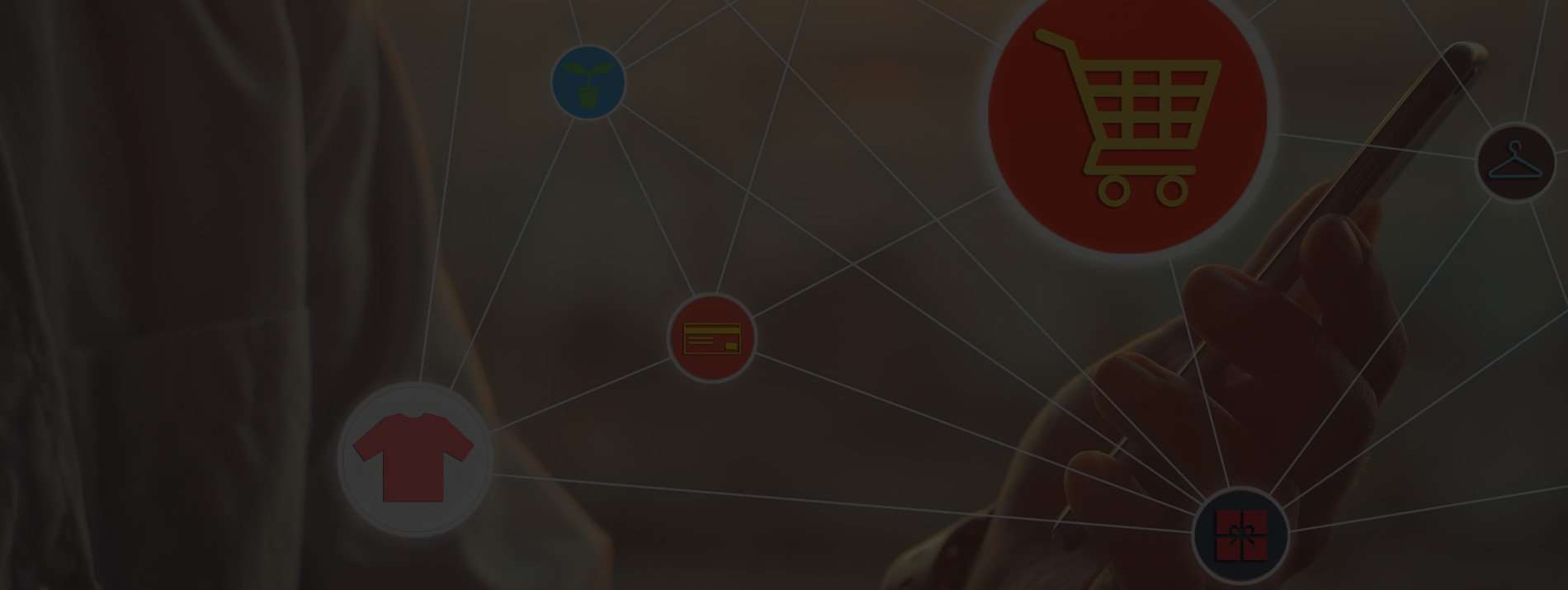Give Someone a Fish and They’ll Eat for a Day… Teach them to Fish and They Can FEAST for a Lifetime…
I know, I know, I know… what we’re going to chat about today is going to fall on a lot of ‘deaf ears.’ Fact is, it’s not sexy. Despite the fact that every single one of our clients relies on us for help online, it has NOTHING to do with the Internet.
Yet, I assert that NOTHING ELSE can deliver the riches that this can and does when it’s fully utilized. And I must confess that I am not the world’s leading authority on this topic. BUT, I know more than most and enough to set you on your way.
I’ll get to this ‘stodgy old pudding’ in a moment but first I want to talk about the two most important numbers in your business. Do you know what they are?
The first is Cost of Acquisition; the amount of money it costs you to get a new customer.
To successfully grow your business you need to know how much it costs you to get a customer. And if you use a well-defined marketing system this number will be entirely predictable.
The way to work it out is simple: do some marketing and divide the cost of the marketing by the number of new customers that marketing generated…
So, for example, if you spend $500 on an Adwords campaign and you get 5 new customers it cost you $500/5 = $100 per customer… So your Cost of acquisition = $100, simple.
By itself, Cost of acquisition doesn’t really tell us anything, but coupled with what I’m about to explain, it becomes invaluable
This second number you need to know is much more exciting (it literally governs the ‘universe’…): it’s called Lifetime Customer Value.
This is the average amount of money a customer spends over their lifetime with you. YOU NEED TO WORK YOURS OUT.
For the sake of this example I’m going to use a LIFETIME CUSTOMER VALUE of $5,000.
And, by subtracting Cost of acquisition from LIFETIME CUSTOMER VALUE you can work out how much money each customer is worth to you, or in other words, your profit.
In this example your profit would be $5,000 – $100 = $4,900.
Of course, for real accuracy you need to detract your operating expenses, cost of delivery etc., but for this example we’ll keep it simple.
What’s so powerful about this simple number is that knowing your profit from each customer allows you to discover how many new ones you need to reach your income goal.
All you need to do is divide the amount of extra income you want by your profit from each customer.
For example, if you want another $200,000 a year you’d need $200,000/4,900 = 41 new customers, assuming their lifetime value came in the first year.
What we have done here is EXTREMELY important…
We Have Quantified What You Need To Do To Reach A Particular Goal
Just 41 new customers and the $200,000 would be yours over a period of time.
You wouldn’t have to get them all at once either; you could get them in dribs and drabs over a period of months. But what if you could tell, in advance, how much money you’d need to spend to get those 41 customers?
Well, you can!
All you need to do is take your Cost of Acquisition, remember the amount of money you need to spend to get a customer, and multiply it by the number of customers you want.
For this example we said your Cost of acquisition is $100, so $100 x 41 = $4,100 and you’d have your 41 customers and an extra $200,000 in your pocket!
You might have a few less, or maybe even a lot more, but the important thing is to make an educated guess!
Put simply, with these numbers, a $4,100 investment should result in $200,000 of extra income over a period of time.
Imagine a bank offering that kind of interest!
Millions of people would be chucking their $4,100 into it as often as they could and be getting rich in the process!
The biggest lesson to take away from this whole exercise is the importance of WISE INVESTMENT!
If you didn’t know these numbers beforehand and you just did sporadic bits of marketing to random prospects, you’d NEVER get anywhere…
You’d spend a little – statistically insignificant – perhaps get what you consider a poor response and give up…
Woops… whereas had you invested a little more, measured, tweaked and invested more, then before you knew it you’d have a stable, predictable model for the kind of growth most business owners simply cannot imagine (because they never understand what you do now…).
This exercise has taken a defined goal: $200,000 in extra income.
Broken it down into what needs to happen to reach that goal.
And finally, linked the achievement of the goal to SPECIFIC, measurable actions.
No mystery, no magic, no silver bullets, no smoke and mirrors. Just PEOPLE, an OFFER and NUMBERS!!!
That’s it…
Now How Could We Do It?
Well look… there are a ton of marketing opportunities out there. You probably have your favorites. As you know, I run my company helping people online. Yet today we’re going to talk about DIRECT MAIL.
And before you dismiss it as old, defunct and expensive, let me share a few facts with you…
- 50% of consumers say they pay more attention to postal mail than e-mail. – Epsilon Channel Preference Study. That means that if you insist on communicating entirely or mostly with email and neglect direct mail you may very well miss HALF the sales opportunities…
- 26% of consumers rank direct mail as more trustworthy than email… only 6% ranked blogs and social media as trustworthy. – Epsilon
- 60% of consumers say they enjoy checking their mailbox and receiving mail. – Epsilon. They like it!
- 65% say they receive too many emails every day to open them all. – Epsilon. A fast growing percentage of people resent email marketing.
- Tangible materials such as direct mail trigger a much deeper level of emotional processing. – Bangor University and Millward Brown
- In 2011 the total volume of first class mail was down 7%, but direct mail for commercial purposes was up 7%. – Target Marketing
- More than 12 BILLION catalogues are mailed annually.
- Investment in direct mail for advertising rose 5.8% from 2010 to 2011, encompassing $48 BILLION. Yes, during a recession, spending on direct mail rose!
- NOTHING out-performs direct mail for new donor acquisition. – NP Economic Research
- The World’s Largest E-Commerce Event is sold via a 31-page direct mail piece!
In fact, Google uses direct mail to sell its’ PPC and Local Places media!
If one is not wilfully blind to reality, they can see that even peddlers of e-commerce and online advertising MUST rely on direct mail for THEIR INCOME. If this fact does not COMPEL an entrepreneur to prioritize mastery and successful use of direct mail in his business, I can’t imagine what evidence would be more convincing.
So let’s get to it and think about how we can use direct mail to get our 41 new customers and $200,000 a year (or whatever you want to achieve).
So, what do we need to do????????
Well… we need…
- A list of people to send our campaign to.
- The letter, postcard or whatever we choose to send.
- Some stamps…
And that’s it… I suppose…
Off ya go… Go get 41 new customers with direct mail.
Ummmm… feels a little tricky right
And it feels difficult because it’s not yet clear what we need to actually do.
So, let’s BREAK IT DOWN…
First off we need: A list of people to send it to…
- WHO are we going to send it to?
- WHERE will we get the list?
- HOW many names will we buy?
- Multiple use or single use?
- What information do we need about the people?
Aha… now things are getting a little clearer.
BUT still, we’re not quite there!
Things are still too fuzzy…
We’re still not quite at an ACTION list. So, let’s BREAK IT DOWN even further.
List of people to send it to…
WHO are we going to send it to?
- NICHE specific e.g. golfers, gardeners, amateur footballers, supplement buyers OR generic?
- What age?
- What gender?
- What affluence?
- Home owner?
- What newspaper do they read?
- WHO SHOULD WE NOT SEND THE LETTER TO? (this is a very important question. You will rarely get exactly who you want on a list, so you may want to remove some names. A simple way to think of this is removing existing customer and or a pain in the butt past customer). Money spent here is money well spent because the cost of names is negligible compared to the cost of the mail piece.
WHERE will we get the list?
- Which list brokers can help me?
- Which list brokers can find matches for the people I want?
- Who has the best price?
- Who has the best guarantee?
HOW many names will we buy?
- How much can we afford as a first test?
- What is a good test number (500, 1,000, 2,000, 5,000)?
- How many names are available for our target group?
Multiple use or single use?
- Single letter or multi-step?
- If the first piece doesn’t do well, will I want to test another piece, another offer?
- If so, what is the price difference?
- How many extra responses will I need to make a) an upfront profit, b) future profit?
What information do we need about the people?
- Do I need addresses?
- Do I need telephone numbers?
- Do I need email addresses?
- Do I need other selection criteria, e.g. do I want to be able to sort by the things I deemed important such as affluence?
Now we’re really getting somewhere…
Now, we could actually go ahead and take ACTION on each of the points above and once done CROSS THEM OUT… In a VERY SHORT TIME, literally hours (if not less) we could have all this done.
And best of all, it’s all OUT OF YOUR HEAD and on paper… See how powerful it is…
Now, to make this crystal clear, let’s take the next part of our early list of things we need to do… This bit…
- A letter, postcard or whatever we decide to send.
We’ve chosen a group of people to send our letter to and now of course we need the actual letter to send. So, let’s BREAK IT DOWN…
A letter (or should it be a postcard, self-mailer, invitation, card?)
What is our offer?
- Free
- Discount
- Exclusivity
What is our theme – enter the conversation in their mind…
- Tied to an event
- Tied to news
- Tied to their NEEDS
Do we have an example to model?
- Past letters?
Are we including any enclosures?
- Vouchers
- Testimonials
- DVD
- CD
- Something LUMPY to get the envelope opened
What is the response mechanism?
- Call a person
- Visit a website
- Call a recorded message line
What will create urgency?
- Time deadline?
- Quantity deadline?
Have we included a guarantee?
- Yes
- No
- What type?
How will we get it opened?
- Sneak up
- Teaser copy
- Lumpy mail
Who will print the letters?
- Us
- Outside company
- Mailing house
Who will send the letters?
- Us
- Mailing house
- 1st class or 2nd class
Draft the letter.
- Edit letter
- Finalize Letter
Send letter.
MEASURE RESPONSE.
TWEAK and send again.
And there we have it. A STARTING action list of things to do to get our direct mail campaign test out the door and on its way to generating new customers.
But What DICTATES Response to Direct Mail Campaigns?
Well, contrary to what 99% of people will tell you, what’s in the letter, while important, is nothing nearly as critical as…
LIST SELECTION!!!
WHO you send the letter to. And you only have choices. Here they are in order of preference.
1. Your HOUSE list. Your active and inactive customers will always be the most responsive (unless something has ‘gone wrong’).
2. A partner’s list to which you are endorsed.
3. A buyer or response list. People who have bought or responded to offers like yours.
4. Compiled lists…
Then, after list selection, the critical success factors go like this:
- Getting the letter into the A pile – i.e. not straight in the bin. Sneak up and teaser envelopes are the two best ways.
- Once the envelope is open, the HEADLINE counts for 90% of the response. The headline MUST be the first thing they see and it must IMMEDIATELY communicate to the reader WHY THEY SHOULD KEEP READING. You don’t have to tell the whole story in the headline but it must compel the RIGHT PERSON (i.e. the person you want as a customer) to read the letter.
- Next, the first sentence.
- Then the second sentence until the ‘slippery slide’ of reading is established.
- Then the OFFER.
- Then the DEADLINE.
- Then the GUARANTEE.
Most people, AVERAGE business owners (with average results), if they even know these things – which 95% + do not, will just pay them lip service.
Now Here’s Why Direct Mail is REALLY Cool
Now, up until this point, if I was you, I’d probably be thinking, ‘Geez Vishal, this all sounds like a lot of effort’… And frankly I can understand why.
But now let me enlighten you as to why direct mail is so powerful.
Let’s assume we’ve selected some lists, built our mail piece and run some test campaigns. In total we’ve mailed about 5,000 pieces and we’re now averaging a good response and seeing a Cost of Acquisition of say $500 per customer.
At first that seems like a bit of a problem because our upfront order value is only $300. So, we’re $200 in the hole upfront for every customer we acquire. Our service is a monthly service so by month two we’ve caught up and we’re in profit. Indeed our average Lifetime Customer Value is $5,000 – so, we’re pretty safe over the longer term.
Even better we now have a predictable way to acquire new customers in quantities that simply were not possible online. We can literally grow our business as fast as we can afford to send the direct mail!
Plus, our competition has NO IDEA what we’re doing. As soon as we run an online campaign everyone can see it and our competitors copy us within literally days. Offline we can quietly attract new customers in droves and nobody knows what we’re up to. It’s a HUGE competitive advantage.
There is no getting away from the FACT that whatever business you’re in, you SHOULD, you MUST use direct mail as part of your marketing system.
I know it’s unfashionable and I know it carries with it a burden of expense. But each time I recommend it I think back to the advice or Earl Nightingale, advice which to this day has stood both myself and many successful entrepreneurs in good stead. And his advice was simply this:
“If you are ever stuck, not knowing what to do, then simply look around at what everyone else is doing and do the opposite”…
Wise words Earl…







